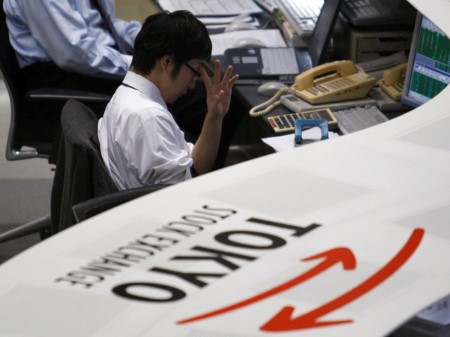




Quarterly Economic Growth Release: More BSP cuts to come
 DOWNLOAD
DOWNLOAD

Monthly Economic Update: Fed catches up
 DOWNLOAD
DOWNLOAD

Inflation Update: Steady and mellow
 DOWNLOAD
DOWNLOAD


Can bumper data, policy day jolt markets?

Nov 30 – If this week has so far been strangely listless for Asian markets, that could be about to change suddenly on Thursday as investors brace for a deluge of top-tier economic data and policy events from across the continent.
Among the highlights, South Korea’s central bank sets interest rates, China releases its official manufacturing and service sector purchasing managers index reports for November, and India announces its third quarter growth figures.
The latest industrial production and retail sales data from both Japan and South Korea are on tap too, all of which could move their respective markets, especially currencies.
All else equal, the risks for Asian markets on Thursday may be tilted to the upside, even though stock markets around the world again struggled on Wednesday.
That’s largely because the ongoing fall in the dollar and US bond yields continues to loosen financial conditions. In theory, this should boost animal spirits and the allure of riskier, higher-yielding assets.
US financial conditions are the loosest since early September and have eased 100 basis points in a month, according to Goldman Sachs. The bank’s global and emerging market indexes ticked up a bit last week, but financial conditions are also looser by around 100 bps from a month ago.
US rates futures markets are now pricing in more than 100 basis points of rate cuts next year starting in May, and the two-year Treasury yield is its lowest since July – it has slumped nearly 40 basis points this week alone.
The dollar on Wednesday hit its lowest since Aug. 10, and most Asian and regional currencies are taking advantage. Two of the best performers are at the polar opposite ends of the ‘carry’ spectrum – the New Zealand dollar and the Japanese yen.
The “kiwi” dollar got an extra boost on Wednesday following the central bank’s ‘hawkish hold’ – policymakers kept the key cash rate at a relatively high 5.50%, but unexpectedly signaled that it could be raised again if inflation doesn’t moderate.
Remarkably, Japanese interest rates are still negative, but maybe not for much longer. Expectations the Bank of Japan will soon end its negative rate policy have pulled the yen up from the depths, and in the process, eased pressure on the central bank to support the currency via direct FX market intervention.
South Korea’s central bank is expected to keep its base rate on hold at 3.50% and leave it there until at least the middle of next year. But as the Reserve Bank of New Zealand showed on Wednesday, policymakers retain the ability to surprise.
Indian GDP growth, meanwhile, is expected to have slowed to a 6.8% annual rate in the July-September period from 7.8%, while Chinese factor activity likely contracted again in November but at a slower pace.
Here are key developments that could provide more direction to markets on Thursday:
– South Korea interest rate decision
– China official PMIs (November)
– India GDP (Q3)
(By Jamie McGeever; Editing by Josie Kao)
This article originally appeared on reuters.com





 By Reuters
By Reuters